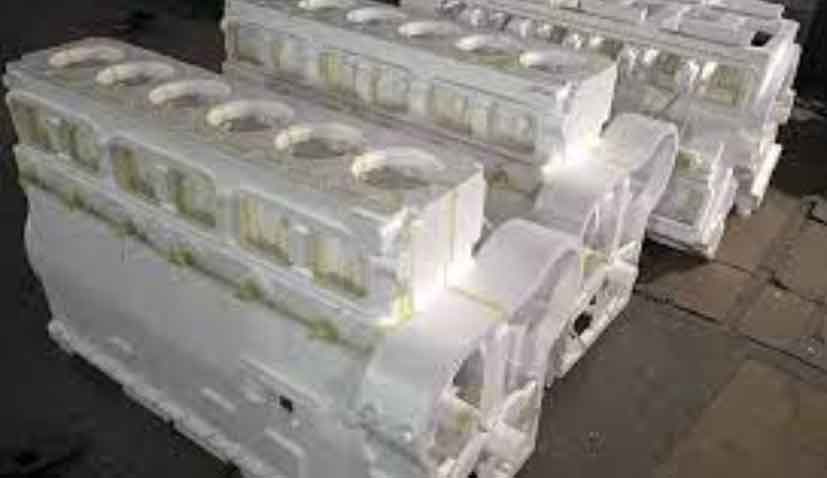
This paper presents comprehensive research on implementing lost foam casting technology for producing 394A wet-type four-cylinder blocks. Through systematic process optimization and quality control measures, we successfully achieved dimensional accuracy and mechanical properties meeting technical specifications.
Structural Characteristics
The 394A cylinder block features complex geometry with wall thickness of 6 mm and overall dimensions 470 mm × 270 mm × 335 mm. Key challenges include:
- Multiple internal oil/water channels requiring precise sand filling
- Thin-wall sections prone to incomplete filling
- High-pressure sealing requirements (0.6 MPa oil test)
Pattern Assembly
The EPS pattern consists of four segments bonded using semi-automatic thermal adhesive equipment. Critical parameters include:
| Parameter | Value |
|---|---|
| Adhesive Temperature | 220-240°C |
| Bonding Speed | 15-20 cm/min |
| Adhesive Line Width | 2-3 mm |
The bonding quality directly affects casting integrity, with improper bonding causing defects:
$$ \sigma_b = \frac{F}{A} \geq 0.8\ \text{MPa} $$
Where σb represents bond strength, F is failure force, and A is bonding area.
Gating System Design
An inclined top-pouring system was developed to optimize molten metal flow:
| Component | Dimensions (mm) |
|---|---|
| Sprue | 40 × 50 |
| Runner | 65 × 8 |
| Filter | 50 × 100 × 20 (10 PPI) |
The pouring temperature range was determined through thermal analysis:
$$ T_p = T_m + \Delta T_f + \Delta T_c $$
Where Tp is pouring temperature (1495-1510°C), Tm is melting point, ΔTf is fluidity compensation, and ΔTc is cooling loss.
Coating Application
Three-layer KY-II coating system demonstrated optimal performance:
| Layer | Baumé Degree | Drying Time |
|---|---|---|
| 1st | 74-76 | 4 hrs |
| 2nd | 60-62 | 3 hrs |
| 3rd | 60-62 | 3 hrs |
Coating permeability was calculated using:
$$ K = \frac{Q \cdot \mu \cdot L}{A \cdot \Delta P} $$
Where K is permeability, Q is gas flow rate, μ is dynamic viscosity, L is coating thickness, A is area, and ΔP is pressure difference.
Process Optimization
Key parameters for successful lost foam casting implementation:
| Parameter | Optimal Value |
|---|---|
| Vibration Time | 80 s |
| Sand Compactness | 1.65-1.70 g/cm³ |
| Cooling Time | 3 hrs |
The metallurgical equation for final composition control:
$$ [C]_{final} = [C]_{initial} – \Delta C_{oxidation} + \Delta C_{inoculation} $$
Quality Validation
Mechanical testing confirmed HT250 specifications:
| Property | Result | Requirement |
|---|---|---|
| Tensile Strength | 265 MPa | ≥250 MPa |
| Hardness | 205 HB | 180-220 HB |
| Pressure Test | 0.62 MPa | ≥0.6 MPa |
The success of this lost foam casting project demonstrates the process’s capability for complex thin-wall components. Future research will focus on cycle time reduction and automated pattern assembly systems to further enhance production efficiency in lost foam casting applications.
